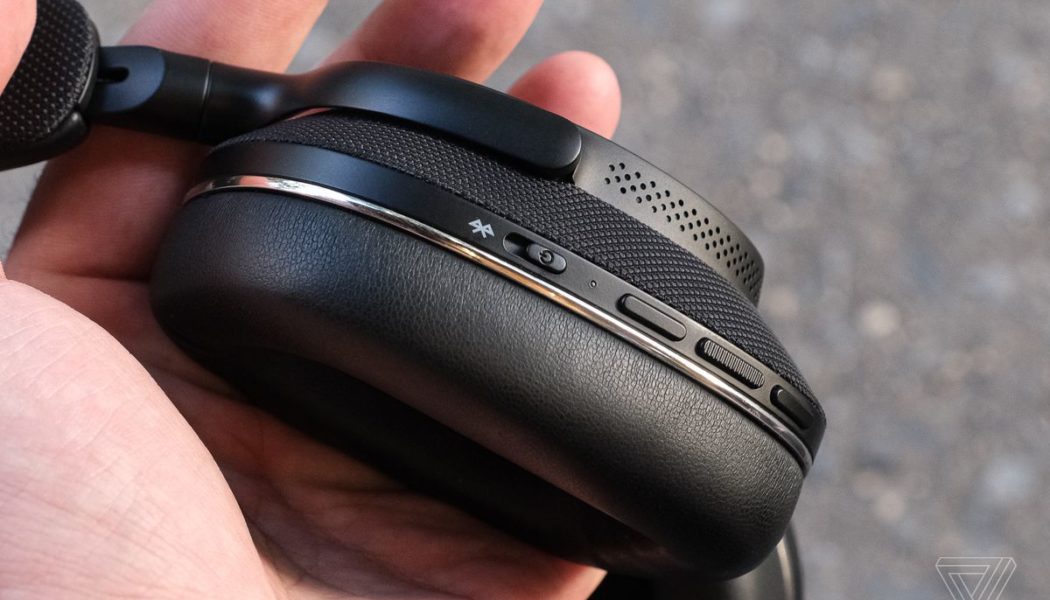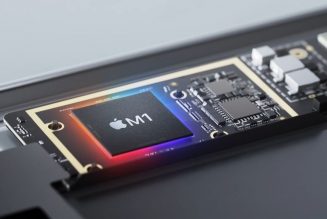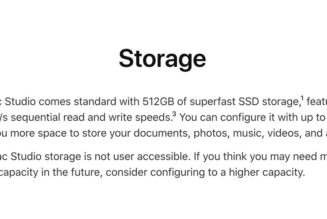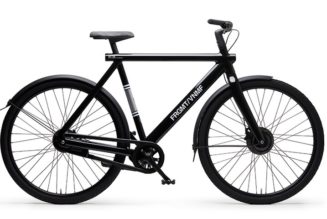You don’t buy Bowers & Wilkins headphones out of practicality. The company’s latest over-ear pair, the $399 PX7 S2, isn’t going to be the default, obvious choice for most people shopping for noise-canceling headphones. But where the British audio brand seeks to separate itself from Sony, Bose, and other competitors is in craftsmanship and nailing the small details. These are headphones where the elegant design is just as much of a selling point as sonic performance. With this new model, Bowers & Wilkins is promising advancements in comfort, noise cancellation, and even better sound fidelity. The company delivers on all of those fronts, even if there are still weaknesses elsewhere.
The PX7 S2 headphones look very similar to the outgoing PX7s, with an overall style that has stayed consistent since the original PX wireless headphones from 2017. They look premium and stay that way, fending off the smudges and fingerprints that are common on rivals like Sony’s WH-1000XM5s. Bowers & Wilkins isn’t throwing in fancy materials like carbon fiber this time; instead, the focus is all on comfort. The non-folding PX7 S2s are slightly smaller and lighter than the previous model and now sit closer to your head. The replaceable ear cushions use memory foam for better extended comfort, and the leatherette headband didn’t cause any aching or dull pain on my large head, even during lengthy listening sessions. The headphones come in black, blue (with gold accents), or light gray.
On the right ear cup are the main controls: a slider switch for power leaves no doubt when the headphones are on or off, which I prefer over just pressing and holding a button. There are also dedicated buttons for play / pause and volume. On the left ear cup is a customizable button that, by default, toggles between ANC on, ANC off, and transparency mode. You can remap this to activate your phone’s voice assistant if you wish. The PX7 S2s support Bluetooth multipoint and can pair with two devices simultaneously for added convenience.
:no_upscale()/cdn.vox-cdn.com/uploads/chorus_asset/file/23658756/buttons.jpg)
Bowers & Wilkins says the revamped 40-millimeter drivers and other acoustic upgrades have ratcheted up sound quality compared to the PX7s with significantly less harmonic distortion. The PX7 S2s support a range of Bluetooth codecs, including aptX Adaptive, aptX HD, aptX, AAC, and SBC. More importantly, they also have “significantly angled drivers” that the company says results in superior spatial placement, total consistency, and stereo imaging. The drivers on the older PX7s had a much shallower angle, and Bowers & Wilkins seems confident that the S2s have restored some of its audio magic and should wow anyone who might’ve been unenthused about the PX7s.
Vocals cut through with excellent clarity, bass is deep and rumbly when necessary, and the soundstage is impressively wide and expansive for closed-back headphones. The PX7 S2s come across as big and emotive. They give off a special feeling when listening to them — almost like you’ve got a miniaturized pair of Bowers & Wilkins’ iconic full-size speakers wrapped around your ears.
For the first time, the company offers you some control over the EQ and sound profile in the Bowers & Wilkins Music app for Android and iOS. But instead of a range of EQ sliders to play with, you can only make basic adjustments to bass and treble. I never felt a need to adjust the out-of-box sound: they sound downright fantastic as is. Listening to Muna’s new self-titled album, there was more character and clarity from these headphones than I got from Sony’s 1000XM5 or the Bose QC45s. Apple’s AirPods Max might still edge out Bowers & Wilkins when it comes to detail, but it’s very close, and the PX7 S2s feel more punchy and lively.
:no_upscale()/cdn.vox-cdn.com/uploads/chorus_asset/file/23658726/DSCF8398.jpg)
:no_upscale()/cdn.vox-cdn.com/uploads/chorus_asset/file/23658727/DSCF8405.jpg)
If you’d prefer to listen wired, you can only do so using the USB-C port. Like Apple and the AirPod Max, Bowers & Wilkins has made the curious decision to fully eliminate the 3.5mm input on these headphones — though, unlike Apple, it includes a USB-C-to-3.5mm cable in the box. You’re still able to plug into a headphone jack on various devices that way; just don’t go losing the cable. It strikes me as premature for $400 headphones to be ditching the 3.5mm connector, and it feels a bit like companies are learning the wrong lessons from Apple. Most haven’t taken such a drastic step towards all-digital audio, but maybe we’re about to see a trend take hold.
Explaining the move, Bowers & Wilkins told me “it’s simply that 3.5mm is a less-used input in 2022” and noted the advantages of USB-C. The headphones will charge as you listen over a wired USB-C to C connection, for example. And even if there had been a 3.5 input, the PX7 S2s don’t support passive audio; they need battery power to work. “We’ve taken the view that for almost all listeners today, wireless transmission is the most likely use case,” the company told me. It also pointed out that it includes a longer USB-C cable than most headphone makers to aid with different use cases.
:no_upscale()/cdn.vox-cdn.com/uploads/chorus_asset/file/23658760/detail1.jpg)
Active noise cancellation on the PX7 S2s has noticeably improved over the prior model. I didn’t have a chance to test their flight chops, but they did a commendable job hushing city noise while I was working outside a coffee shop. Bowers & Wilkins estimates that they cut around 30dB of noise from the outside world, and that’s good enough for my use case. Even if the S2s still fall short of best-in-class noise cancellation from Sony, Apple, and Bose, what’s here is more than serviceable and didn’t leave me disappointed considering the high sticker price. The transparency mode is pleasant-sounding and does the trick, but no one has come close to matching just how natural this feature sounds on Apple’s AirPods Max.
Voice call performance is still merely passable. Bowers & Wilkins repositioned some of the microphones for better vocal pickup and clarity, but these aren’t headphones I’d want to use for a day full of Zoom meetings. Battery life is unchanged from the PX7 at 30 hours, which remains perfectly competitive. The headphones now charge faster, juicing up from dead to 100 percent in two hours instead of the three hours it would take their predecessors. And if you’re in a rush, a 15-minute top-off will get you several hours of playback time.
I’ve been quite impressed by the PX7 S2s, so much so that I’d take them even over my trusty Sennheiser Momentum 3 headphones. There are still valid reasons to favor mainstream picks from Sony or Bose: they provide airy comfort and unmatched ANC. But if sound and substance are what you’re after, these headphones demonstrate that Bowers & Wilkins can still hang with the best of them, with an extra dash of elegance and sophistication that you won’t find from most competitors going for mass appeal.
Photography by Chris Welch / The Verge








